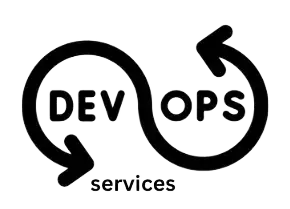Communication Effectiveness in Outsourcing, Communication Techiques in Outsourcing
Communication Effectiveness in Outsourcing, Communication Techiques in Outsourcing
Communication Effectiveness in Outsourcing
Introduction
A good part of the communication in outsourcing relationships is achieved at the stage of developing the contract and imparting the training. This stage is crucial, as it is here that the service provider's team members get to understand the specifics of the work, and also the client learns about the techniques, technologies and processes the vendor is going to employ. It is therefore imperative to develop the best possible models for communicating the processes and terms, and imparting training.
Recent research indicates that documentation options are not as effective as modeling options. The effectiveness comes in the order of visual (video-based), audio and paper. In terms of means used to communicate, the success of communication increases in the order of email, telephone conversation, video conference and face-to-face meetings.
Companies involved in outsourcing tend to focus on efficiency parameters such as milestones, deliverability and output to such an extent that they often ignore the building blocks to effectiveness of the deal. Many outsourcing contracts fail precisely because of the failure on the part of the partners to develop proper communication systems. Outlined below are the factors that help communication effectiveness in outsourcing projects.
Communication Techniques
Effective communication depends upon choosing communication mechanisms that suit your specific outsourcing situation. Is your outsourcing partner onshore, nearshore or offshore? All these different situations have their own specific needs, depending on time zone, language and culture factors.
Distances and different time zones sometimes make it difficult to have face to face meetings with all involved. Add to this the complication of different people on the buyer side giving and getting different impressions of what the end user needs. Further, the involved individuals may be going through a good day or bad day at work or in their personal sphere. All these can have an impact on the development effort, in big ways or small ways.
Prefer Face to Face
As stated earlier, face to face meetings are always preferable to other means of communication, since here the chances of misunderstanding are lesser. There are many subtle non verbal clues available as on-the-spot feedback. These enable the participants to adjust their communication according to the feedback. For instance, a facial expression of the correspondent indicates that he or she is somewhat confused by what you said just now, whereas you may not get to know this in a phone conversation.
Further, real-time communication in face-to face meetings enable all participants to ask questions and counter questions any number of times, till they are satisfied of their understanding. Gestures and facial expressions come as additional help.
This logic explains the hierarchy in the modes of communication. As we go down from face-to-face through phone to documents, add-ons like gestures, voice inflection are lost one by one.
Effectiveness Metrics
As stated earlier, a lot depends on the nature of the project- whether it is software applications, product development, client-server applications, server-based applications or consumer-oriented software. You may choose one or more of the following metrics depending on the nature of the application. For instance, in situations where face to face meetings are difficult, the partners may choose real time mechanisms like chat, video or telephone conversations. Also, the partners have to build in face to face meetings as a regular part of discussions, and not only when crises come up.
Check and Verify
To make sure that the communication process is being effective, the partners need to check periodically and take mutual feedback. This helps to take corrective measures before loopholes lead to bigger problems. In more rigid environments, formal arrangements like minutes of meetings and video conferences, formal documents for requests of change etc. could help. Also the communicator has to ensure that the person on the other side has got it the way he meant it.
Periodic focus groups can help to review the communication process and suggest improvements.
Most experienced project managers or participants will identify communication effectiveness as the single most important factor that contributed to the success or failure of the projects they were involved in. It is therefore vital to identify and employ suitable communication systems, have the right parameters in place to measure communication effectiveness and engage in mutual feedback on the effectiveness of communication.
We request you to call us at +91 9313063554 or email us at [email protected] for you software development needs.







